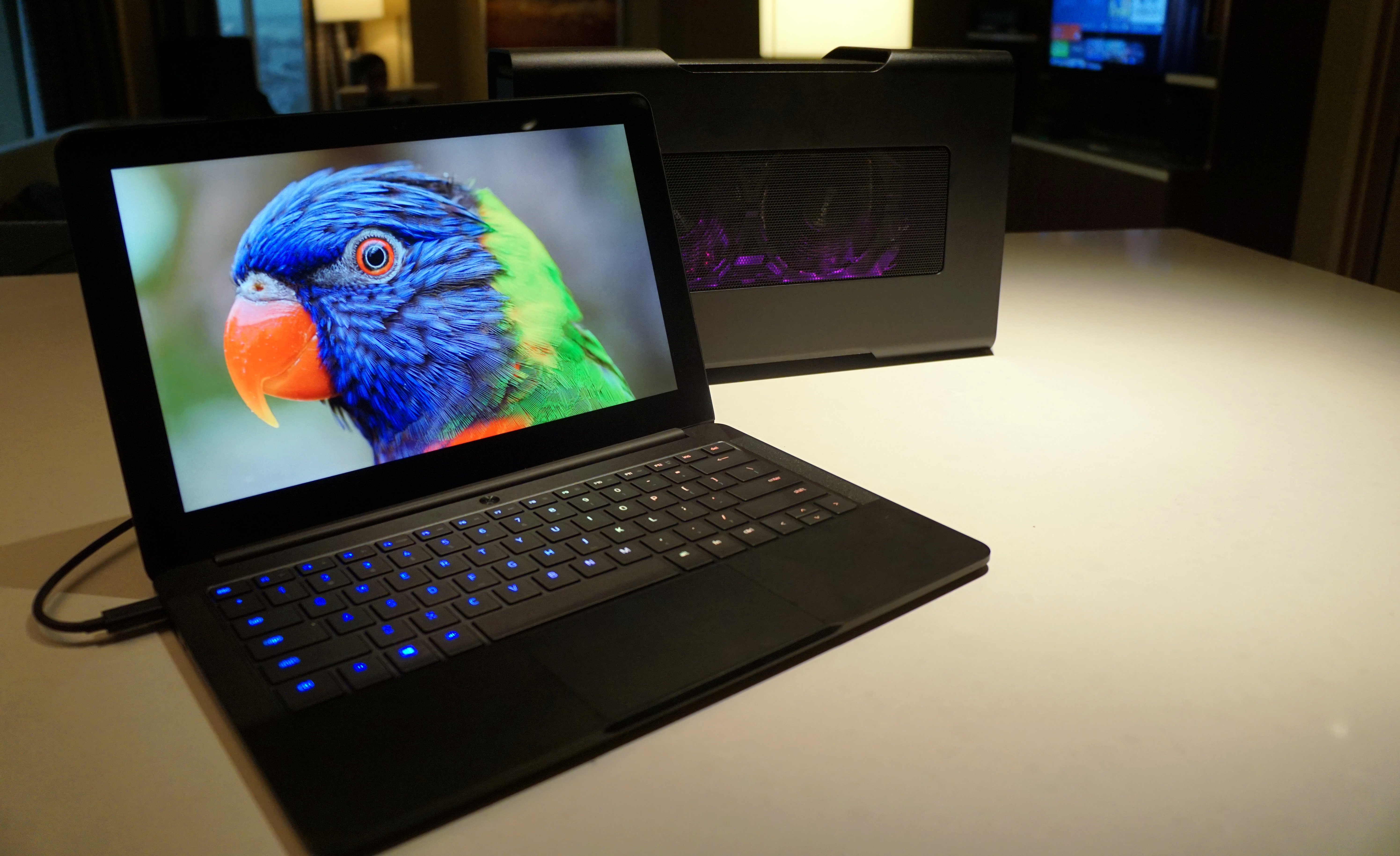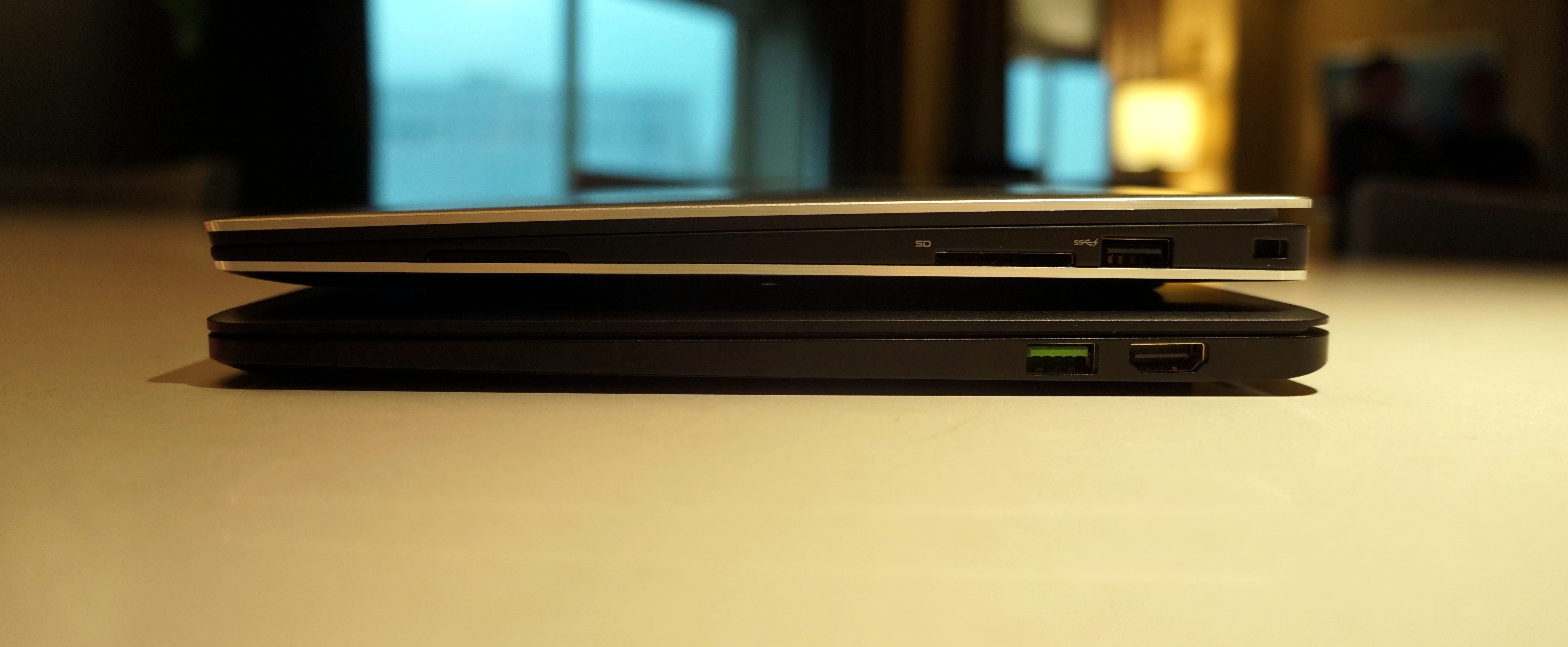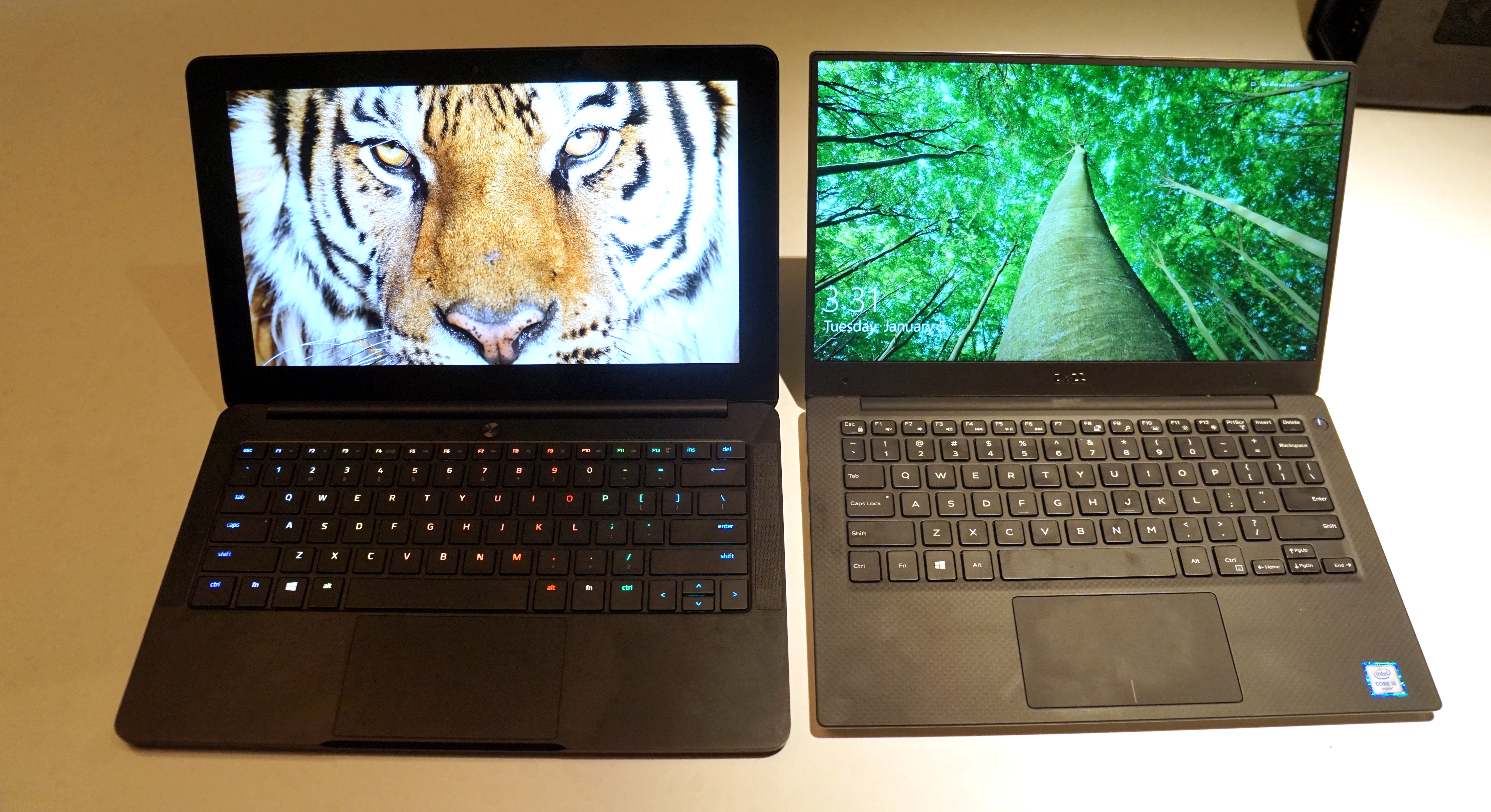Razer aims to own the Ultrabook market with i7-powered, $999 Blade Stealth

The Razer Blade laptop is the closest thing the PC has to a MacBook Pro: a thin, powerful laptop with excellent performance and build quality well beyond most of the field. Apple’s influence on Razer can be felt right down to the aluminum chassis—and the premium price that goes along with it. Take away the premium price, and you lose out on that premium build quality. Right?
Apparently not. Razer’s big reveal for CES 2016 is the new 12.5-inch Blade Stealth ultrabook, which packs an i7-6500U Skylake processor, 8GB of DDR3 1866 MHz RAM, a 128GB SATA-based PCIe drive, and a 2560x1440 display into a 2.75 pound package. For $999. Bwuh!? I didn’t even mention the feature Razer loves to talk about (individually backlit RGB keys), or how utterly gorgeous and vibrant the IGZO screen looks, a Sharp display technology that with IPS-caliber color and viewing angles. Or the Thunderbolt USB Type-C port, which I’ll get to in a second.
Razer says it plans to disrupt the PC market with the aggressive pricing for the Stealth, which it can manage by selling through only the Microsoft Store and Razer’s own, rather than its usual broad range of retailers. Spec-wise, the entry level system is a real beast, although Razer does charge a real premium for more storage space. Upgrading to a 256GB SSD with the 2560x1440 screen raises the price by $200, to $1199. The next upgrade bumps you up to a 4K 3840x2160 display (still a 256GB SSD) for $1399. And the system tops out at $1599 for the 4K display and a 512GB SSD.
I’d have liked to see more options there, like a 512GB SSD and the base-model display, especially since $200 is steep for a storage upgrade. But for an Ultrabook, it’s impressive to see 8GB of memory and a top-end i7 CPU in the base model. For comparison’s sake, the new Dell XPS 13 starts at $850 with a 128GB SSD but only 4GB of DDR3 and an i3-6100U CPU. Only the $1650 model uses the i7-6500U, and even then it only offers a 256GB SSD (although it’s a faster NVMe, rather than SATA, solid state drive).
I played around with the Blade Stealth for a few minutes and compared it to my Dell XPS 13. Razer’s system is noticeably thinner and feels more expensive, although I’ve come to like the soft rubber interior of the XPS 13 over the cold kiss of aluminum. The trackpad feels great, like the larger Blade and unlike so many other Windows laptops. The full-size HDMI port is a nice touch, although sadly there’s no SD card reader.


If the Blade Stealth has any weakness, it may be battery life. Its 45 watt hour battery is significantly smaller than the 54 watt hour battery in the XPS 13, which can keep the system going for 10+ hours. Skylake’s efficiency should help keep the Blade Stealth running for a respectable, if not stunning, duration.
The Razer Blade Stealth certainly gives you way more for your money than Apple’s comparable 13-inch MacBook Air, with a similar premium feel. It’s out this month, and it’s actually just part one of the two-hit combo Razer dropped on CES this year. The second is the Razer Core, a graphics card dock that can turn the Sealth (and potentially many other portable laptops) into desktop gaming beasts. I thought the Core was important enough to warrant its own article; you can read more about it here.
Keep up to date with the most important stories and the best deals, as picked by the PC Gamer team.

Wes has been covering games and hardware for more than 10 years, first at tech sites like The Wirecutter and Tested before joining the PC Gamer team in 2014. Wes plays a little bit of everything, but he'll always jump at the chance to cover emulation and Japanese games.
When he's not obsessively optimizing and re-optimizing a tangle of conveyor belts in Satisfactory (it's really becoming a problem), he's probably playing a 20-year-old Final Fantasy or some opaque ASCII roguelike. With a focus on writing and editing features, he seeks out personal stories and in-depth histories from the corners of PC gaming and its niche communities. 50% pizza by volume (deep dish, to be specific).

